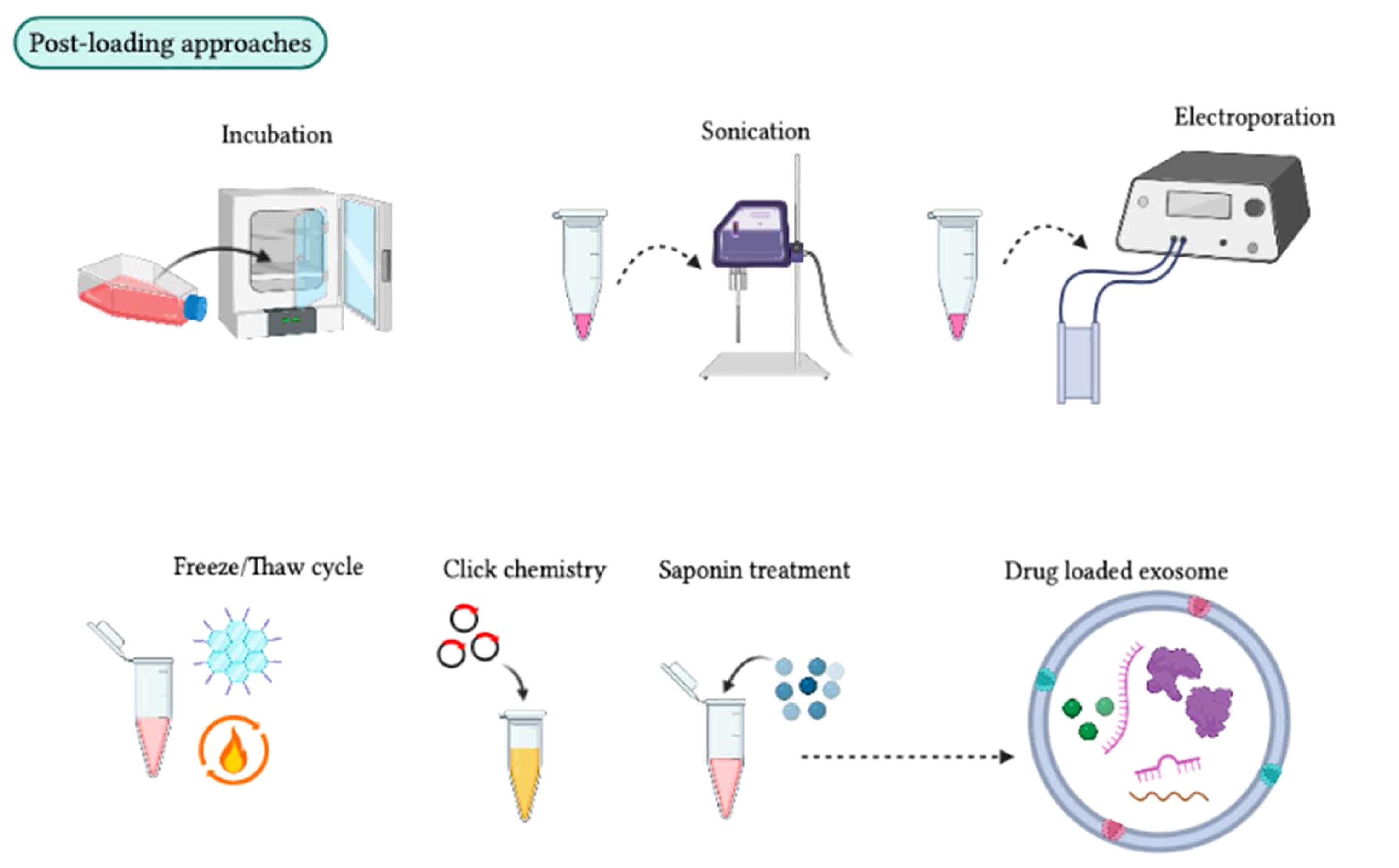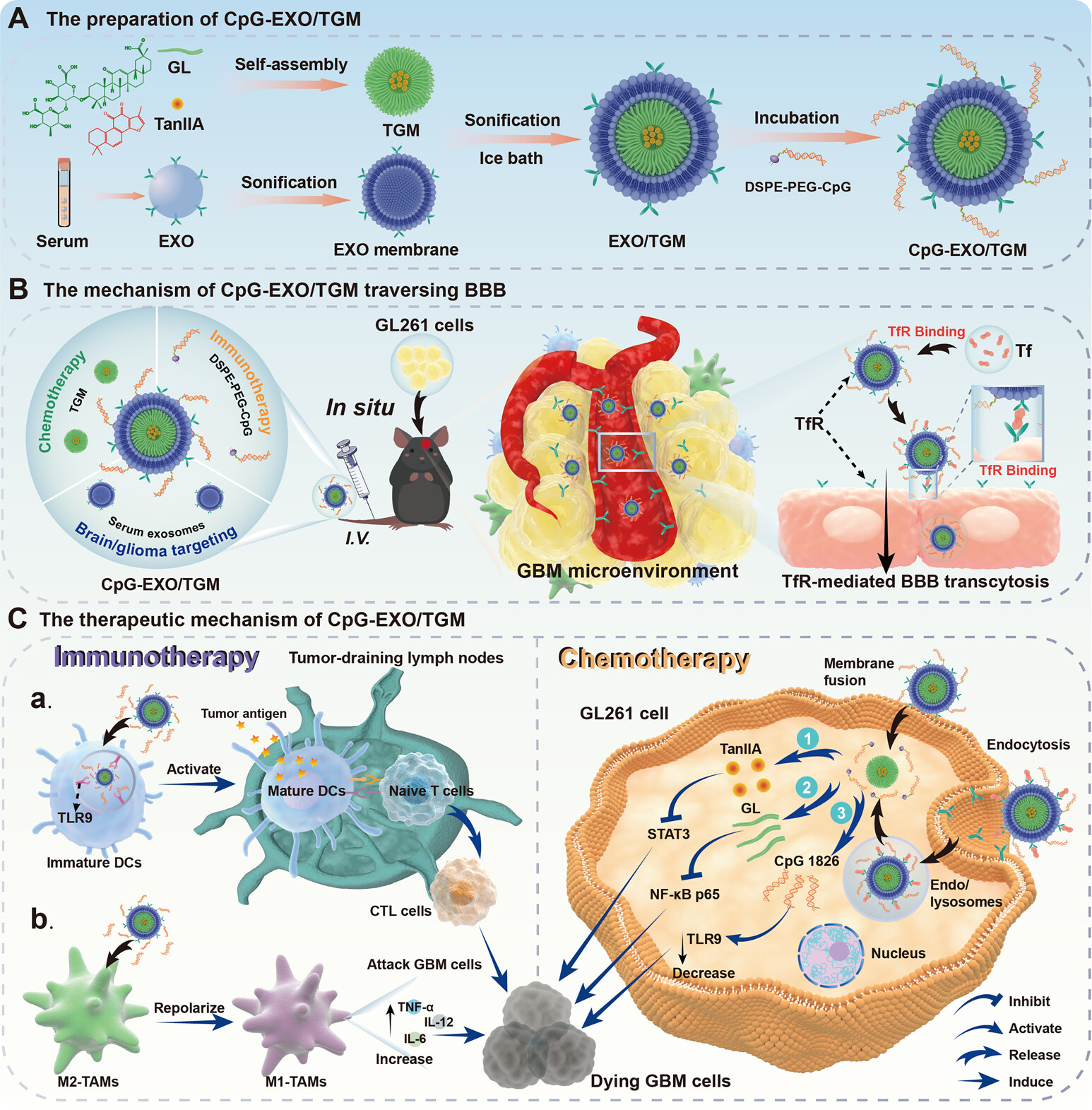Exosome Cargo Post-loading Service
Exosome Cargo Post-loading Service introduces target cargo into exosomes separated from cells through electroporation, incubation and other methods, so as to be used for delivery research of functional molecules such as nucleic acids, proteins, and small molecule drugs.
Exosomes are nanoscale vesicles naturally secreted by various cell types, known for their excellent biocompatibility and key roles in intercellular communication. With membrane-enclosed structures, innate targeting ability, and low immunogenicity, exosomes have emerged as ideal nanocarriers for drug delivery and biomedical research. In the context of engineered exosome applications, post-loading is a pivotal strategy where target molecules (such as miRNA, siRNA, mRNA, proteins, small-molecule drugs, or imaging probes) are loaded into exosomes after their isolation via specific physical or chemical techniques. This approach avoids genetic manipulation of donor cells and offers greater flexibility in controlling cargo type and loading efficiency.

Habib A. et al. Frontiers in Immunology. 2023.
The post-loading strategy is widely adopted due to its operational simplicity and often higher loading efficiency compared to pre-loading methods. It can be categorized into two main approaches:
1. Passive Loading
This method involves incubating exosomes with a high concentration of cargo molecules, allowing small or hydrophobic compounds to diffuse across the exosomal membrane. It is particularly suitable for lipophilic drugs or small-molecule probes.
2. Active Loading
This technique utilizes physical or chemical methods—such as electroporation or saponin-assisted incubation—to transiently disrupt the exosome membrane, facilitating the entry of cargo into the vesicle interior. It is ideal for hydrophilic or macromolecular cargos such as nucleic acids and proteins.
Leveraging a high-purity exosome preparation system and multiple cargo loading platforms, MtoZ Biolabs offers Exosome Cargo Post-loading Service to efficiently encapsulate and deliver siRNA/mRNA, proteins, small-molecule drugs, or fluorescent probes, supporting a wide range of applications including disease mechanism research, targeted therapy, nanocarrier development, and in vivo tracking.
Analysis Workflow
The Exosome Cargo Post-loading Service offered by MtoZ Biolabs covers the entire workflow from exosome preparation to functional validation, ensuring efficient and stable encapsulation of cargo molecules into exosomes:
1. Exosome Preparation
We provide high-purity exosomes or accept client-provided exosomes. Techniques such as size-exclusion chromatography (SEC), ultracentrifugation, or immunoaffinity capture are used to obtain intact, functional exosomes.
2. Loading Strategy Design and Optimization
Based on the cargo type (RNA, protein, small molecule), we customize the loading strategy and optimize loading conditions accordingly.
3. Removal of Free Cargo and Purification
Loading efficiency is assessed using qPCR (for nucleic acids), fluorescence measurements, HPLC, BCA, or ELISA. Unloaded cargo is removed using SEC, ultrafiltration, or centrifugation to obtain purified cargo-loaded exosomes.
4. Characterization and Delivery
Provide full characterization reports including TEM, NTA, and Western blot, along with cargo-loading verification data.
Applications
Exosome Cargo Post-loading Service is suitable for a wide range of applications:
RNA Delivery & Gene Regulation
Deliver siRNA, miRNA, or mRNA into specific cell types for gene silencing or expression modulation. Applicable in cancer, viral infections, autoimmune diseases, etc.
Protein/Small Molecule Drug Delivery
Load functional proteins (e.g., cytokines, enzymes) or small-molecule inhibitors for precision therapy at the cellular level. Supports development of targeted nanodrug systems.
In Vivo Imaging & Targeted Tracing
Load fluorescent probes or MRI contrast agents to enable real-time visualization of exosome biodistribution, uptake, and localization in vivo.
Service Advantages
1. Support for diverse cargo types: RNA, proteins, small molecules, probes.
2. Multiple loading platforms with combinable strategies.
3. High loading efficiency and traceable data suitable for research and translational use.
4. Optional exosome functional validation and multi-omics analysis platforms.
5. End-to-end service from experimental design to downstream application support.
FAQ
Q. How to select the appropriate loading strategy for different types of cargo?
Loading methods are selected based on the physicochemical properties of the cargo:
For small RNAs (siRNA, miRNA, mRNA), electroporation is recommended due to enhanced membrane permeability and high encapsulation efficiency.
For proteins or large probes, ultrasonication or freeze-thaw cycles are preferred to disrupt the membrane transiently and facilitate encapsulation.
For hydrophobic small molecules or dyes, passive co-incubation is effective due to its simplicity and ability to promote membrane embedding via diffusion.
Our Exosome Cargo Post-loading Service will provide personalized strategy recommendations and optimization based on cargo size, charge, hydrophobicity, and stability.
Q. Are there specific storage or handling requirements for cargo-loaded exosomes?
Yes. Loaded exosomes may require special storage or handling conditions to maintain their stability and biological activity. Our technical experts will provide detailed guidelines to help you store and use your cargo-loaded exosomes under optimal conditions.
Case Study
In this study, researchers utilized Exosome Post-loading Technology to encapsulate self-assembled nanomicelles composed of Tanshinone IIA (TanIIA) and Glycyrrhizic Acid (GL) (TGM) into endogenous serum-derived exosomes. Simultaneously, CpG oligodeoxynucleotides (CpG ODN) were anchored onto the exosome membrane, creating an immunotherapeutic exosome system named CpG-EXO/TGM. Results showed that CpG-EXO/TGM complexes could bind circulating transferrin, prolonging systemic circulation. They maintained structural integrity while crossing the blood–brain barrier (BBB) and effectively targeted glioblastoma (GBM) cells. In the GBM microenvironment, these exosomes were efficiently internalized by tumor cells, releasing the drug payload to induce apoptosis. CpG ODN further stimulated dendritic cell maturation and reprogrammed tumor-associated macrophages (TAMs) toward the M1 phenotype, enhancing antitumor immunity. Moreover, combining CpG-EXO/TGM with temozolomide yielded superior therapeutic effects and significantly reduced tumor recurrence in a postoperative GBM relapse model.

Cui J. et al. ACS nano. 2023.
How to order?







